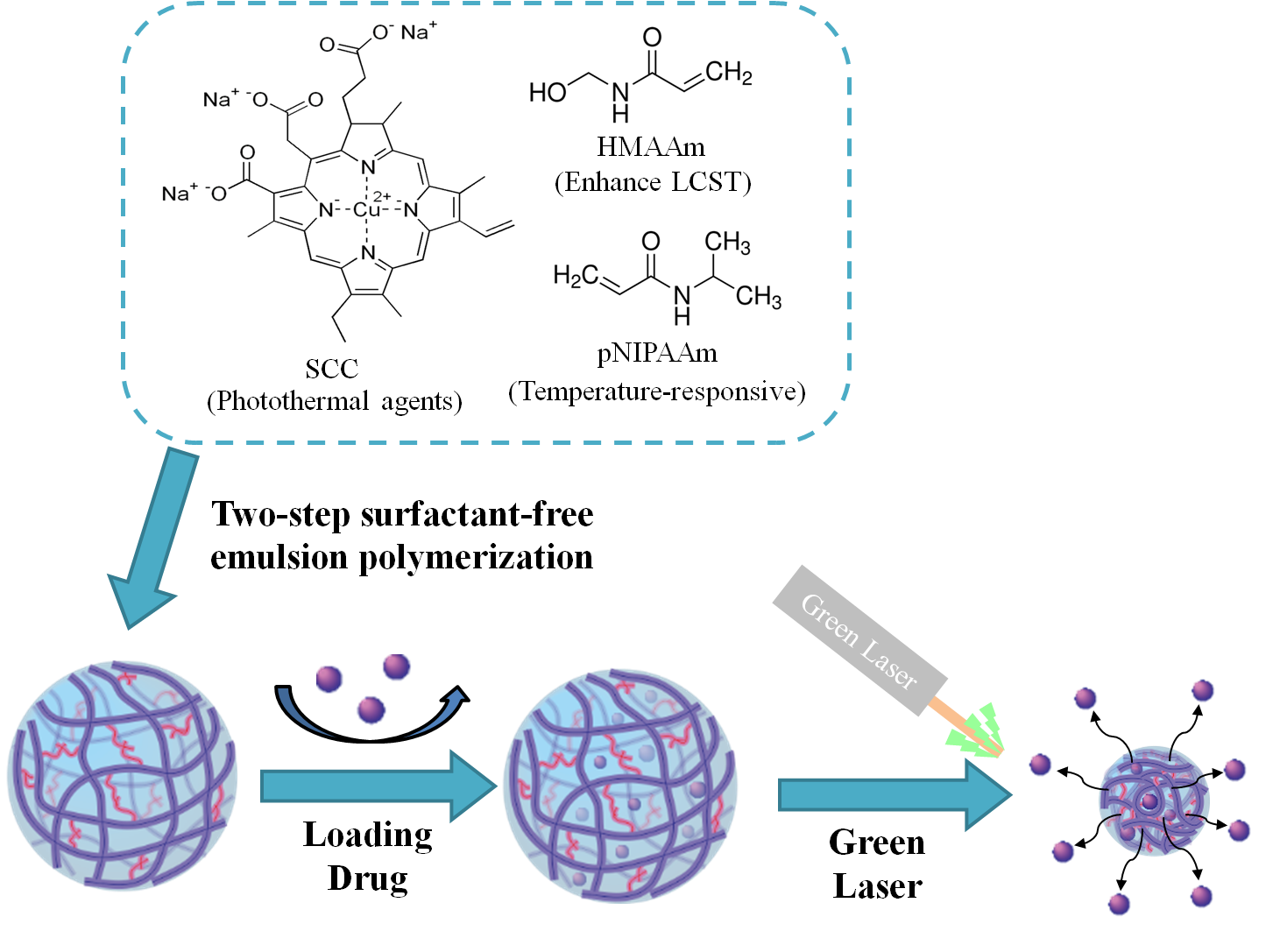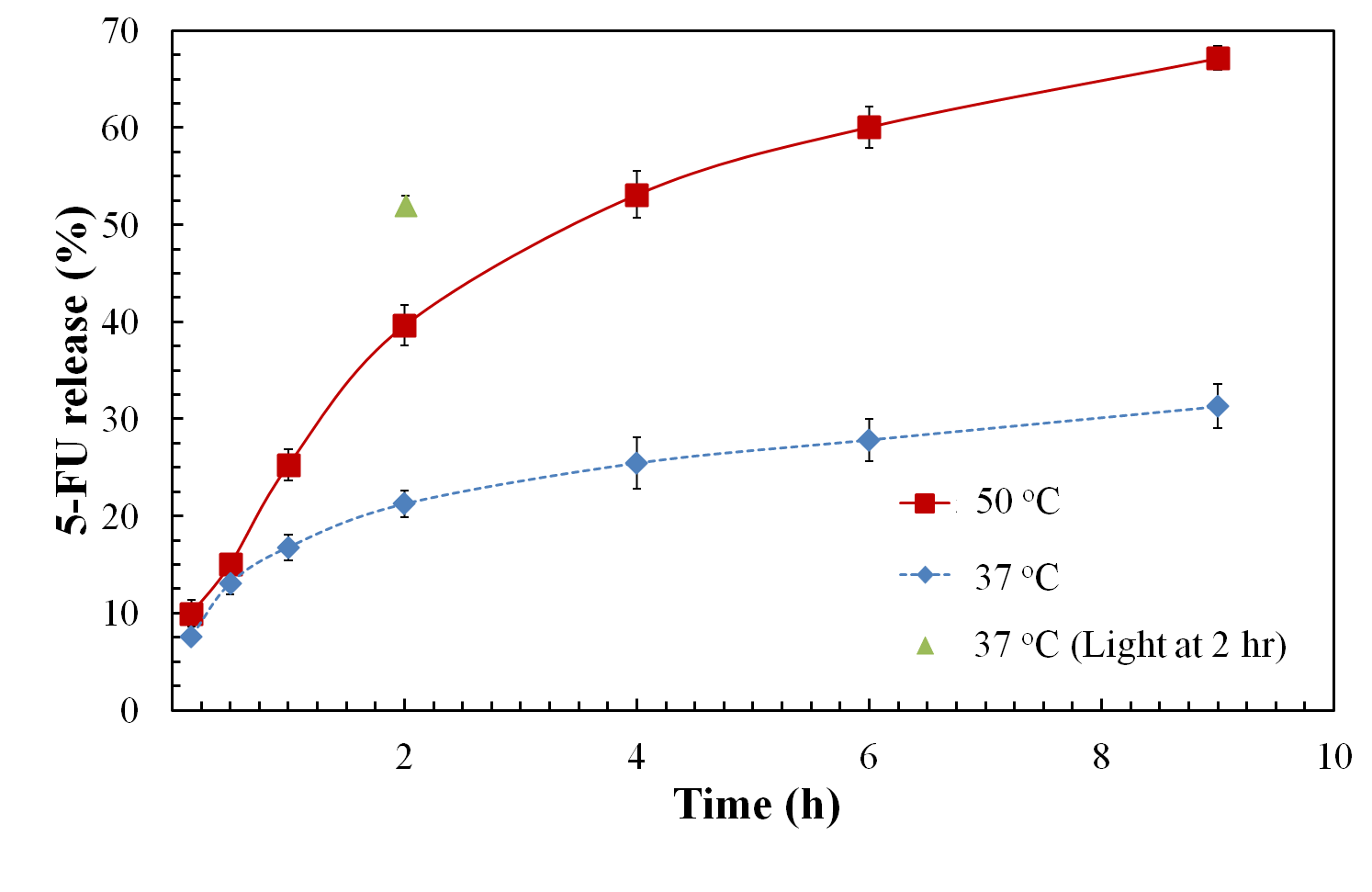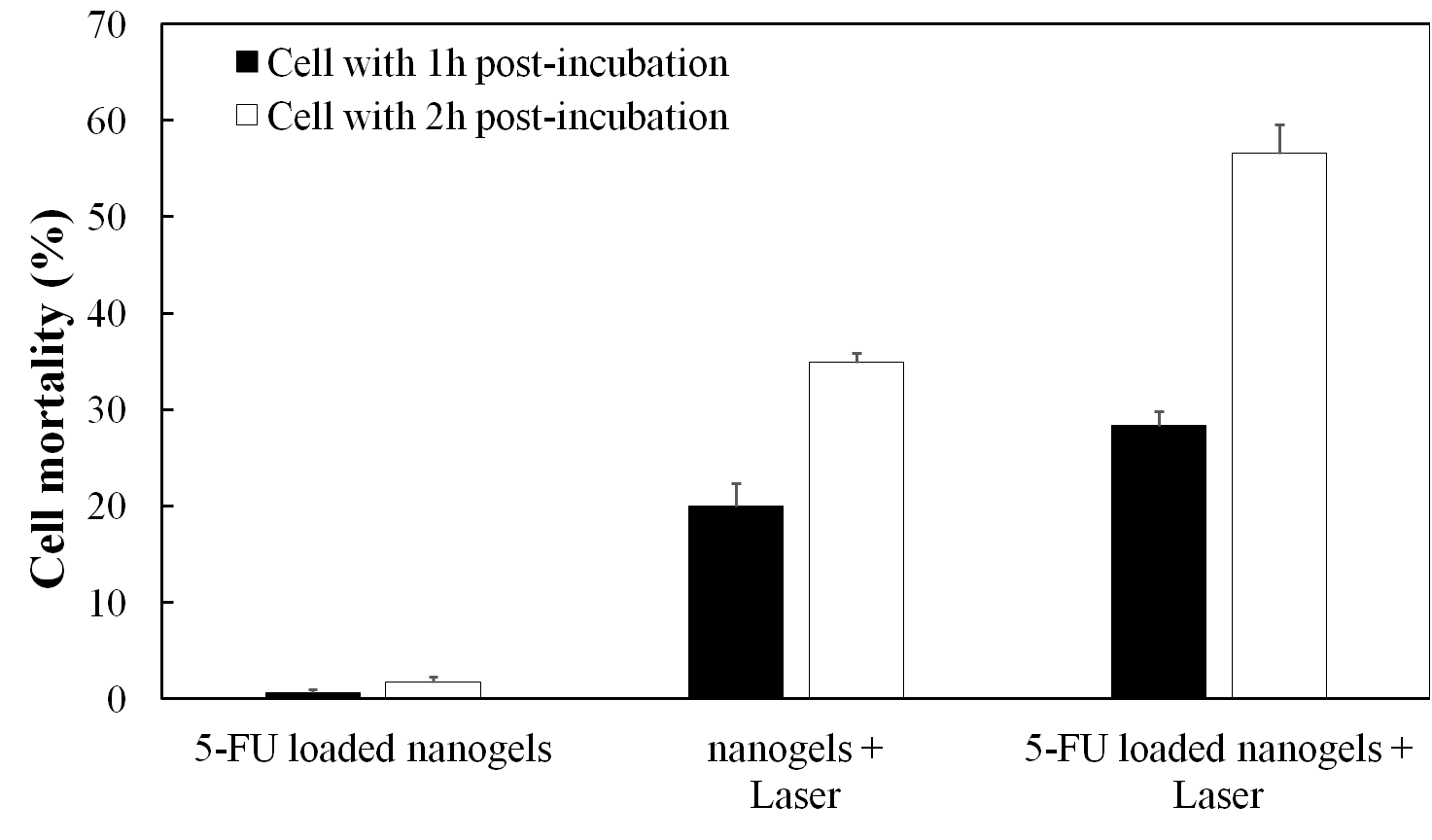Introdcution: Environmentally-responsive nanogels have been popular in controlled drug delivery in recent years. Many researches have been focused on the developement stimulus-responsive nanogels[1]. Since the temperature stimulus can be controlled more easily in comparson to other environmental stimuli, the development of thermo-sensitive nanogels has been the focus of many researches. In this study, we incorporated photosensitive molecules, sodium copper chlorophyllin (SCC)[2], into thermo-responsive nanogels made of copolymers of N-Isopropylacrylamide (NIPAAm) and N-(hydroxymethyl)acrylamide (NHMAAm), and thus the nanogels could be heated to a temperature (> 40 oC) higher than the body temperature on the exposure to green laser light and then release anti-cancer drug (Figure 1). Both the elevated temperature and release drug could kill cancer cells. The designed photo-sensitive nanogel is potentially applied to cancer therapy.

Figure.1 Experimental design
Materials and Methods: Poly(NIPAAm-co-NHMAAm-co-SCC) nanogels were prepared by two-step surfactant-free emulsion polymerization. The amount of drug load and release was determined according to the adsorbance in the UV-visible spectra. 5-Fluorouracil (5-FU) was chosen for a model drug in this study. The cell-killing ability of the nanogel was determined by using trypan blue staining.
Results and Discussion: We first invesigated the thermal responsiveness of the nanogel in drug release. At 37 oC, ~30% of 5-FU is released from nanogels within 9 h (Figure 2), while the amount of the 5-FU release reach ~67% within the same time interval at 50 oC. On the other hand, when the drug-loaded nanogel was exposed to green laser for 2 min, a rapid burst of 5-FU was observed. The release of 5-FU was almost doubled compared to the amount of the release at 37 oC. The rapid response to green laser indicates that the immediate temperature increase causes the nanogel's immediate shrinkage, resulting in sudden drug release. Next, we examined the cell death by incubation of cells with the nanogel and green-laser exposure. The incubation of the cells with the 5-FU loaded nanogel alone did not cause significant cell death after 2 h (Figure 3). On the other hand, the cells that were incubated with the drug-free nanogel were killed significantly by green-laser exposure for 2 min. Further addition of the 5-FU loaded nanogel enhanced the cell-killing efficacy of the green-laser irridiation to ~60% mortality. The results indicate that the cells are killed by photo-thermal response and thermal-induced drug release of the thermal-responsive nanogel.

Figure.2 The release profile of 5-FU from the nanogels at 37oC and 50oC. The green triangle indicates the release of 5-FU after exposure to green laser for 2 min.

Figure.3 Green laser-induced cell-killing efficiency of 5-FU-loaded nanogels.
Conclusion: In this stuyd, we prepared a nanogel with photothermal and thermo-responsive properties. The nanogel was heated on the exposure of green laser and then shrunk to stimulate drug release. The elevated temperature and drug release exert an additive effet on cell killing. We expect that the nanogel could be applied potentially to cancer therapy.
The authors would like to thank the financial support from the Ministry of Science and Technology, Taiwan
References:
[1] Maya et al. Current Pharmaceutical Design, 2013. 19(41): p. 7203-7218.
[2] Gomes et al. Journal of the Science of Food and Agriculture, 2009. 89(12): p. 2003-2010